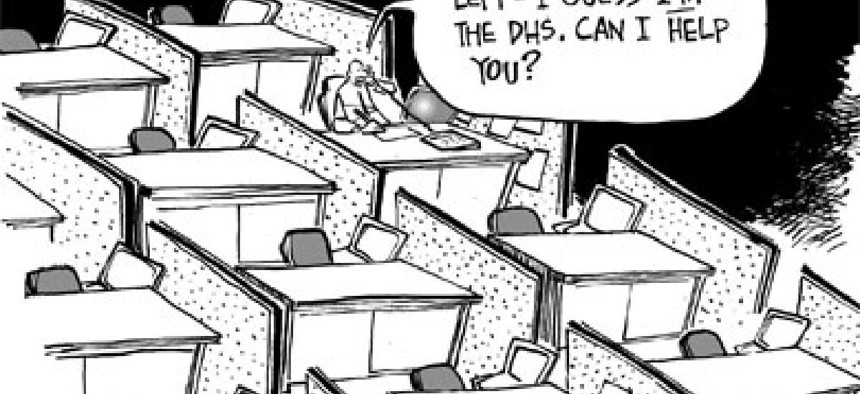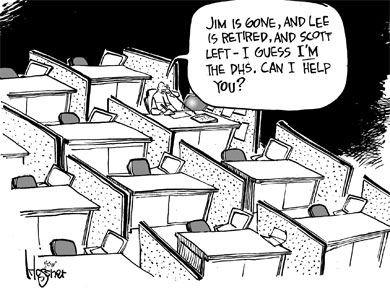Editorial: Retention tension

The Homeland Security Department's inability to keep key leaders is a sign that, five years after the terrorist attacks, DHS is an agency without a clear direction or focus.
One week ago, we were commemorating the fifth anniversary of the 2001 terrorist attacks. That spurred us to ask whether we are safer than we were five years ago. In many ways, the country is focused on securing the homeland in ways that it wasn’t before. But are we as safe as we should be? That is the important and perhaps more difficult question. To answer it, we must look at the agencies responsible for protecting the country’s security.
One way of assessing the health of an organization is by looking at the amount of turnover, particularly in key positions. The announcement earlier this month that Scott Hastings will be leaving his post as chief information officer of the Homeland Security Department’s U.S. Visitor and Immigrant Status Indicator Technology (US-VISIT) program once again reminded us of the level of churn within that agency.
Hastings is just the latest high-level official to leave DHS. Earlier this year, Jim Williams, US-VISIT’s director, left DHS to join the General Services Administration; Lee Holcomb, DHS’ chief technology officer, decided to retire from government and join the private sector; and Maureen Cooney, the department’s acting chief privacy officer, left for a law practice.
That trend is disconcerting, and we think it says something about the health of DHS as an agency. There were parts of Federal Computer Week’s story last week about Hastings’ departure that were even more jarring. Clark Kent Ervin, a former DHS inspector general, said the reasons for the high level of turnover are no mystery. They include what Ervin called “a well-deserved reputation for dysfunction, an inadequate budget, incompetent and unaccountable leadership, and low morale.”
The list of recent departures among DHS’ senior ranks would seem to bear out Ervin’s comments. DHS has an important mission: protecting the country from another terrorist attack and preparing the country to be ready in the event of an emergency. People stay at DHS despite the problems Ervin noted because they believe in that mission. DHS senior spokesman Larry Orluskie attempted to explain the departures as typical of any organization. The people who have left recently were part of the first generation of leaders brought in to create the new department, and it is natural that they would begin to cycle out, he said.
But DHS is not just any agency. Turnover is something to worry about in all organizations, but it is particularly troubling at DHS because of the agency’s mission. DHS is attempting to unify the systems of 23 different agencies, and it is seeking to enable the government to share information. Those efforts will take experience and time, and we are concerned that there is not enough continuity for the agency to move forward on those important tasks.
Unfortunately, the agency’s inability to keep key leaders only fuels the perception that five years after the terrorist attacks, DHS looks like an agency without a clear direction or focus.
Another call for power players
Last week, we asked you who the government IT power players are. In the coming weeks, FCW editors will compile a list of influential people in this community. We are still seeking your thoughts. Do you know a power player who could have been overlooked? Let us know. You can send us an e-mail at cdorobek@fcw.com.
The government IT power players list will appear in the Oct. 30 issue of FCW.

NEXT STORY: Cybereye | What happened in Maryland?





